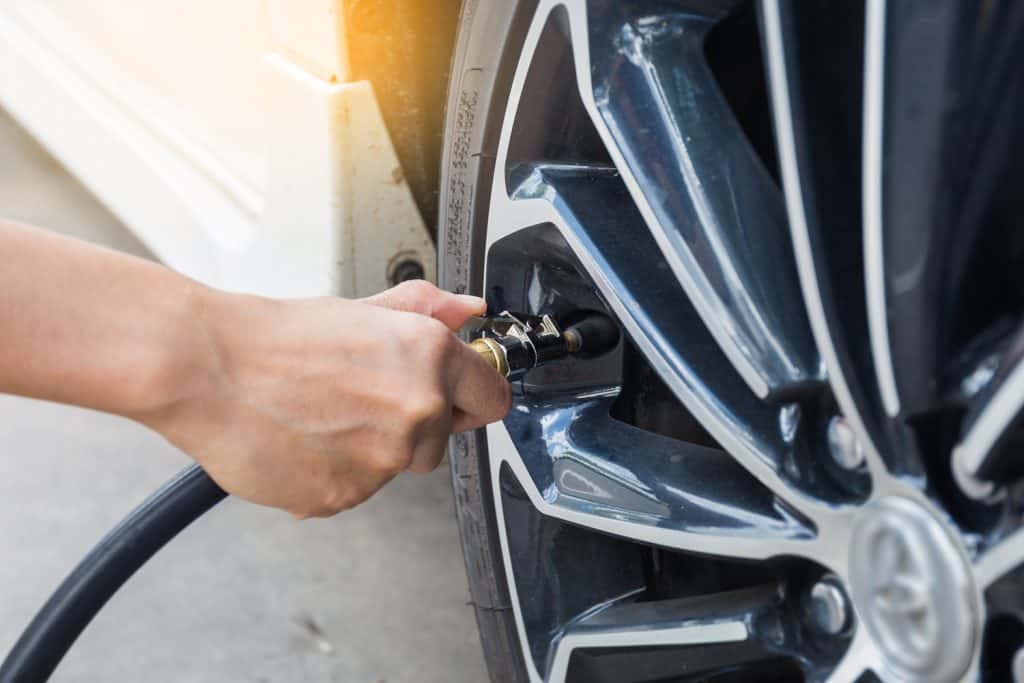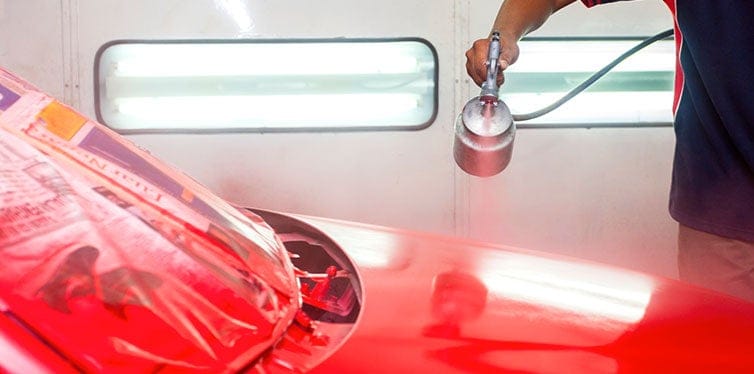We often disregard the maintenance of our vehicles until an issue arises. We’re usually alerted to these issues when a check engine light appears, or the emittance of strange noises occurs.
Nowadays vehicles come with the option of built-in tire sensors, not only to display the speed at which we are traveling but to also constantly measure the pressure within the tires.
Most of us have had the unfortunate experience of waking up early on a chilly morning or rushing out late at night for work only to discover a flat tire.
Equipping your vehicle for emergencies shouldn’t be an afterthought. Having items such as blankets, jumper cables, a spare tire, and a tire iron are all beneficial, but what about adding an air compressor to this list of items?
A portable air compressor for inflating tires is one of the most practical items you can store in your vehicle. Imagine getting lost in the middle of nowhere and suddenly getting a flat tire.
No sign of other cars, and no cell service…… but at least you have an air compressor to inflate that flat.
Inflating Tires With An Air Compressor
At-home use air compressors are also beneficial items to have on hand, as we can use them for multiple tasks around the house such as furniture stapling, nailing, sanding, inflating balls, bicycles, and of course the tires on our vehicles.
A portable unit with a 6-gallon tank otherwise known as a pancake air compressor would be sufficient for such tasks.
Before using your air compressor to inflate the tires on your vehicle, there are a few key points to consider beforehand.
Know The Tire Pressure
Before inflating your tire, you need to know the recommended psi. The manufacturer puts this information directly on the vehicle usually found on the side of the driver’s door and also in the vehicle’s manual.
-
- See also: Best Air Compressor under $200
- See also: Best 20-gallon Air Compressor
Purchase A Tire Gauge
Unless your vehicle is equipped with a tire pressure monitor displayed on your dashboard, you will want to own a gauge. These are used to measure how much pressure is present in your tire.
Too much, or too little can significantly wear your tires before their time. Too much pressure can reduce the grip on surfaces which wouldn’t be ideal, especially on wintery roads.
Not enough pressure can cause higher fuel consumption and greater wear and tear, creating a bald effect on the tire in no time, in which case you will need to purchase at least two new tires to replace the one, as it could cause a difference in traction and wear differently.
If you are fortunate enough to find a replacement of the same brand, size, and tread, then that may be a possibility.
Setting Up The Air Compressor
Plugin the air compressor and turn it on. Connect the air hose to the air compressor, making sure that the tire inflator nozzle is fitted.
Filling Up The Tire
Take the cap off of the tire valve and set it aside. (Be careful not to lose the cap. I have misplaced one in my gravel drive.)
Attach the nozzle to the uncapped stem of the tire. Depending on which nozzle you have, you may need to either press down slightly on the nozzle while it’s inserted into the valve, or you may have a nozzle with a lever on it, in which case you would press down on the lever.
Fill the tire with the proper amount of pressure. This is where a tire gauge comes in handy. (Some air compressors come equipped with the functionality of shutting off when the tire reaches its correct pressure.)
Keep your eye on the gauge, being careful not to exceed the amount of pressure. If it exceeds the pressure, you can release some by simply pressing on the tire valve with your finger.
Replace the cap on the tire valve until snug, but don’t turn it with too much force as it could crack.
Before putting the air compressor away, it’s a good idea to check the pressure in the remaining tires and adjust the pressure accordingly.
Bicycle Tires
Inflating tires on bicycles is done in the same way as a vehicle. Make sure you fill with the proper pressure accordingly. We can usually find the suggested pressure amount on the side of the tires, and it’s always a good idea to check both tires rather than only the flat one.
Below is a list of recommended air compressors suggested for tire inflation.
There are many on the market, including stationary, however, for roadside and home use portable would be best for this application.
The Prow Portable Air Compressor for inflating tires is an ideal option for any driver to possess. Plug it into the cigarette lighter, turn it on and inflate your flat tire in just minutes.
The Craftsman air compressor has a 3-gallon tank, making it lightweight and easy to transport. It has a maximum psi of 155 for quick inflation of your tires.
This Portable Air Compressor Tire Inflator has a maximum psi of 150 with auto shut off and an 11.5ft hose. It features a bright light for quick and safe inflation at night This air compressor features four different nozzles and works on most vehicles., and comes with a full replacement warranty under normal use.
The AZUNO Digital Tire Inflator with Pressure Gauge kit is a perfect addition to your air compressor. It features an LCD screen for easy viewing, a built-in deflator to decrease air pressure if you are accidentally over-inflate, and works with most vehicles with a range of 200 psi.
Final Thoughts
It’s useful, if possible, to own a portable air compressor. Unforeseen circumstances such as flat tires can happen on the road or in your own driveway and having your own equipment to deal with these unfortunate events can be a tremendous benefit instead of having to call a mechanic or a neighbor.







